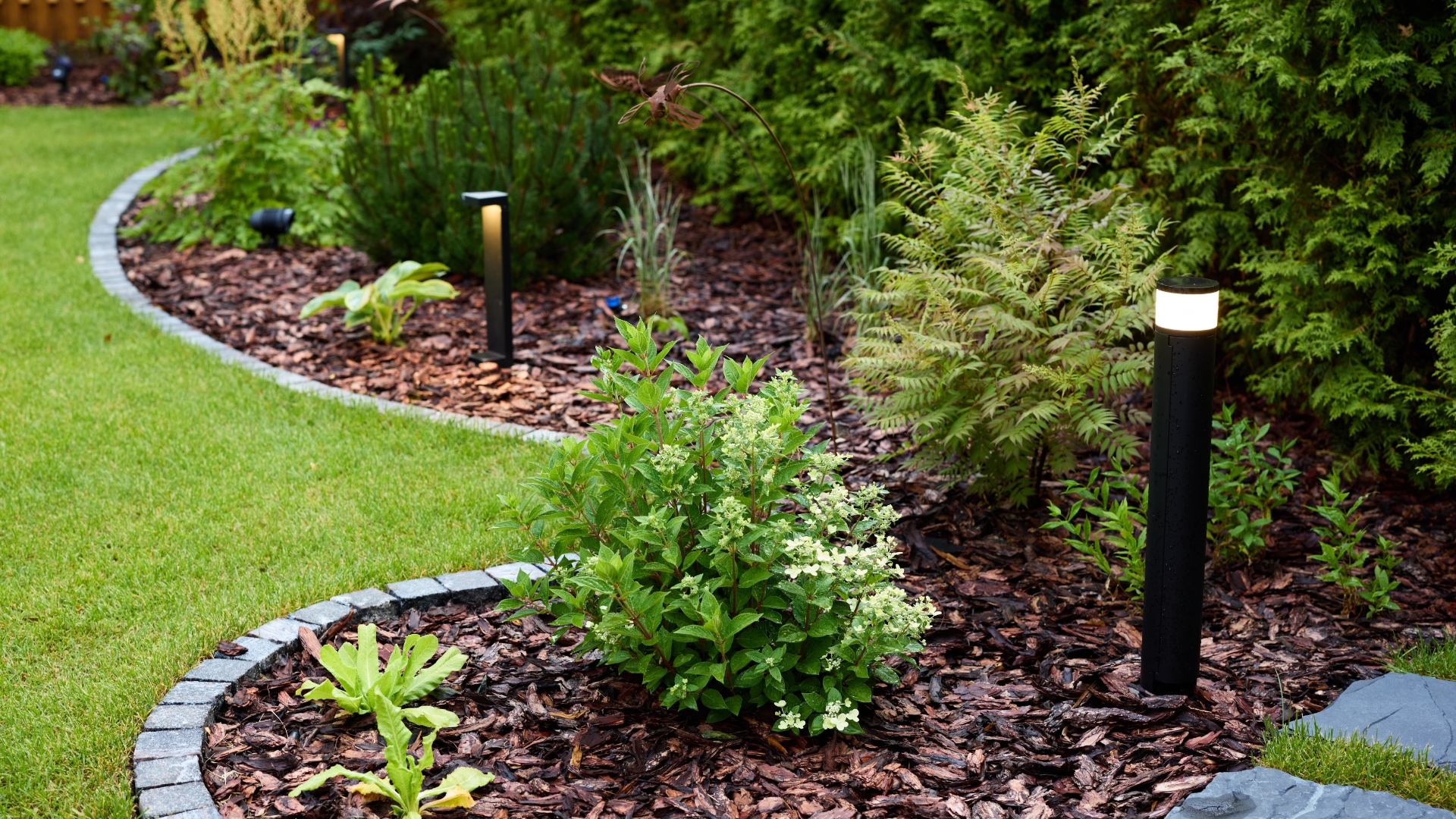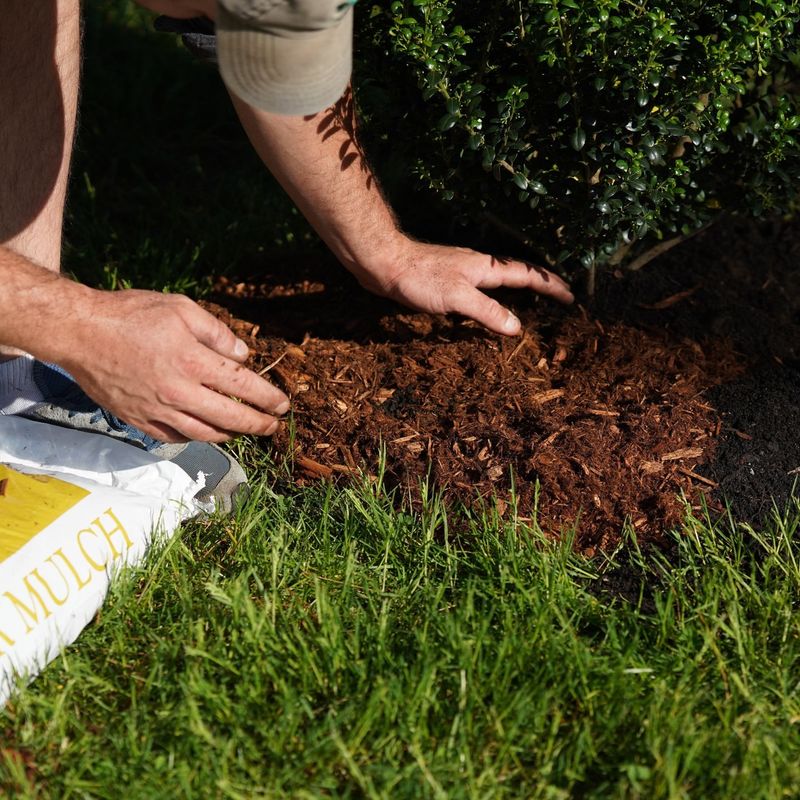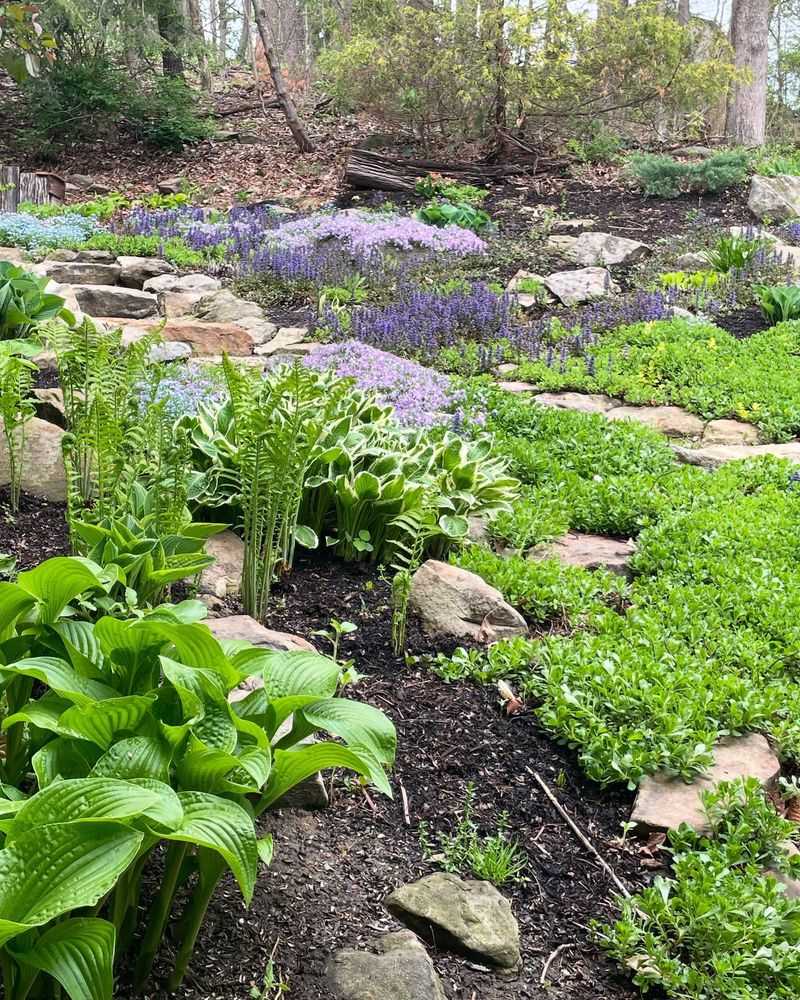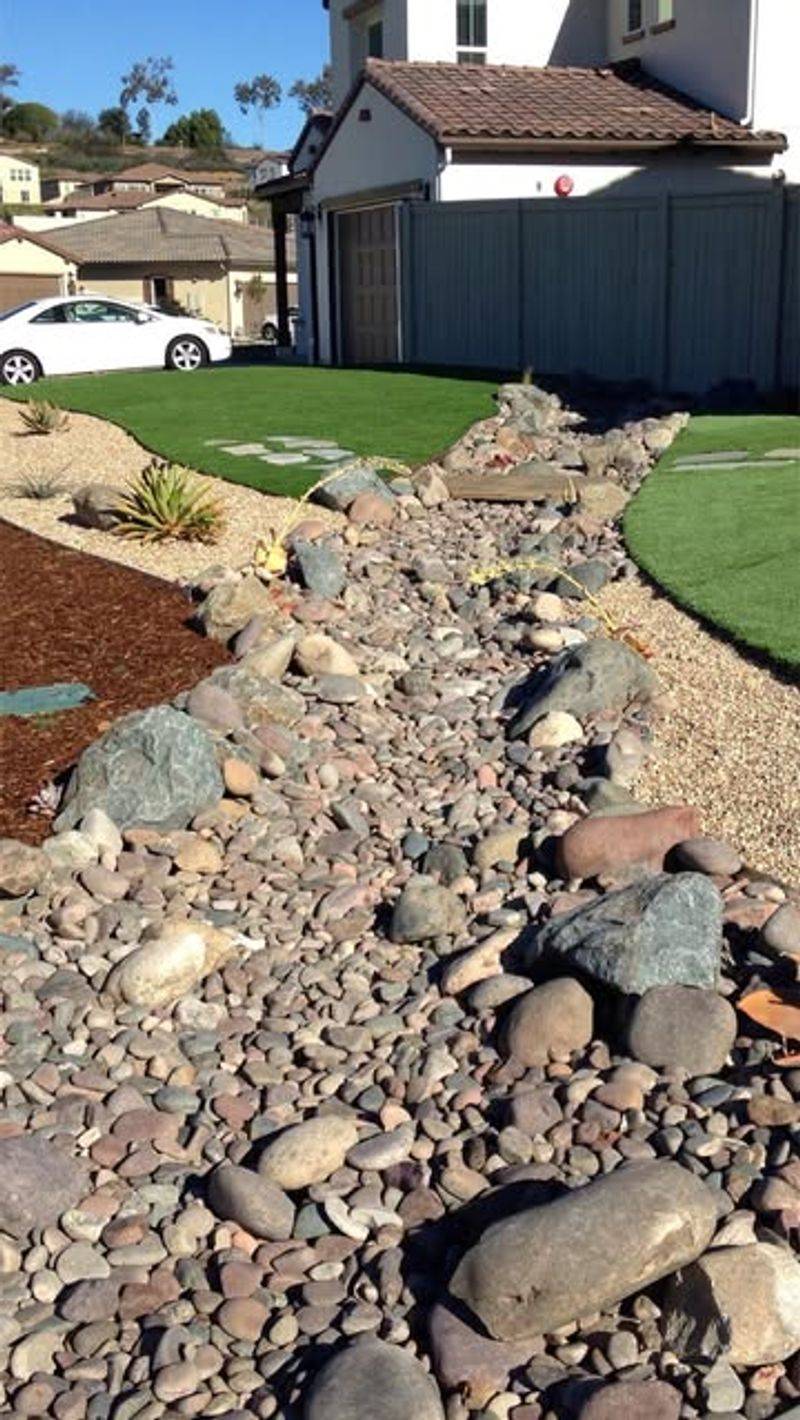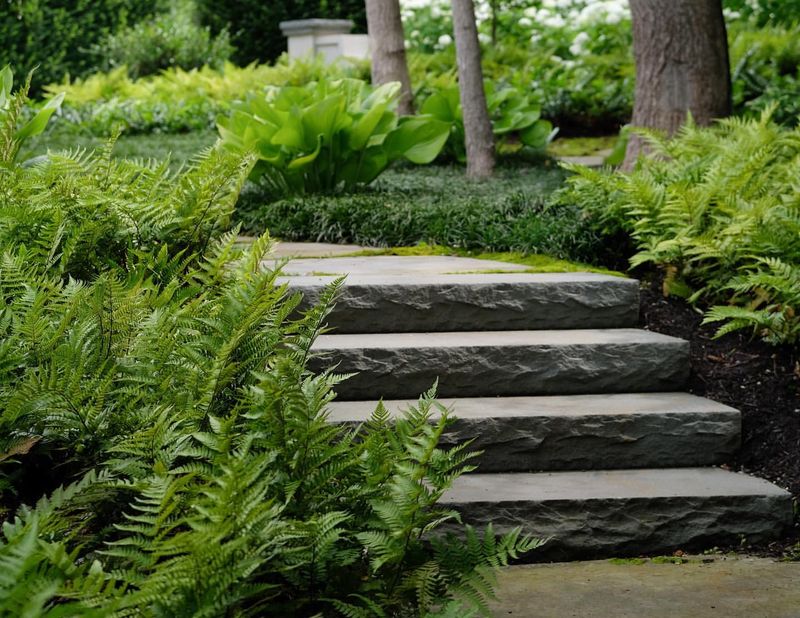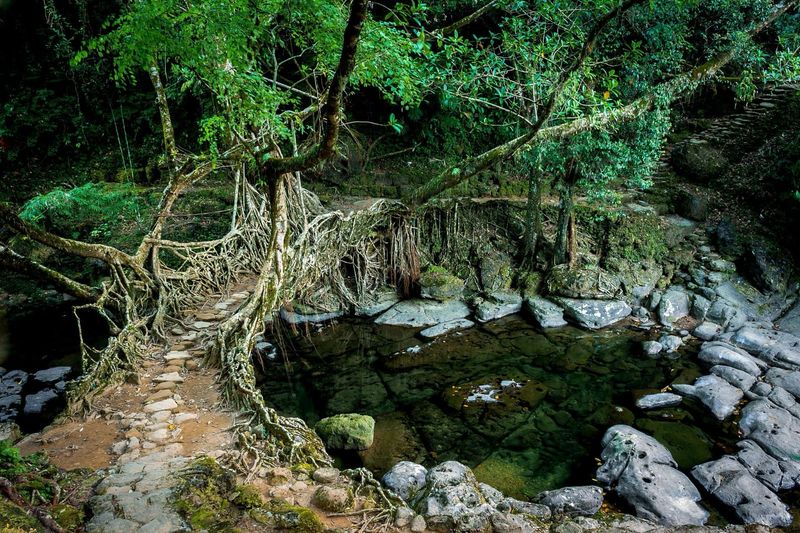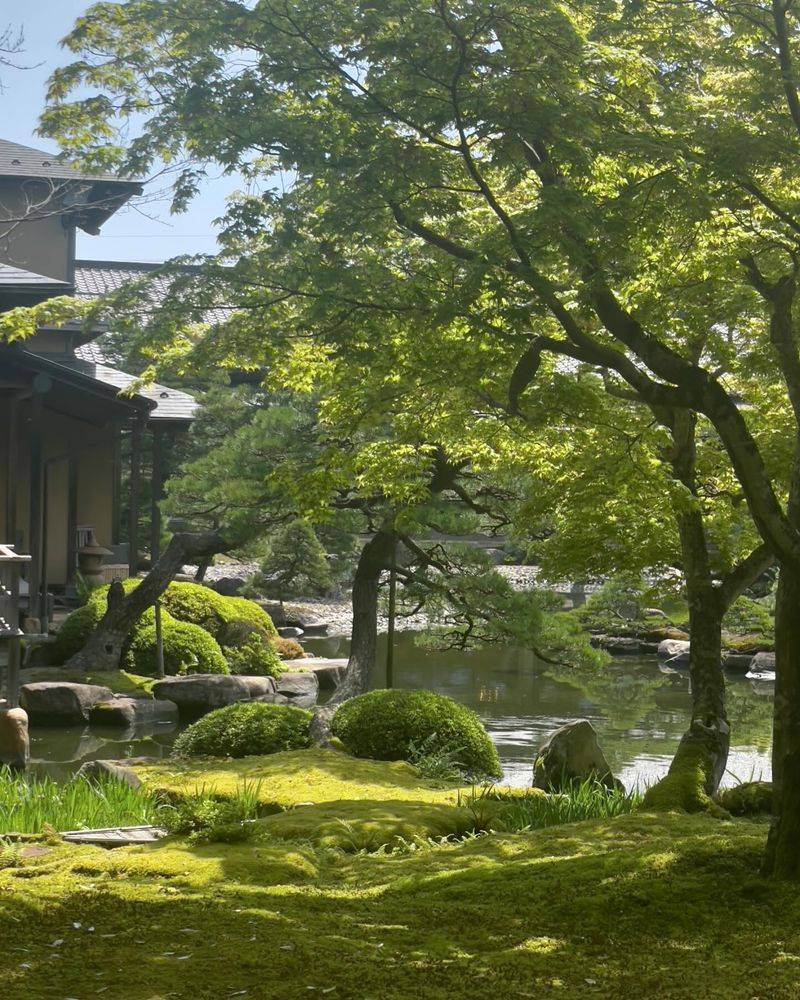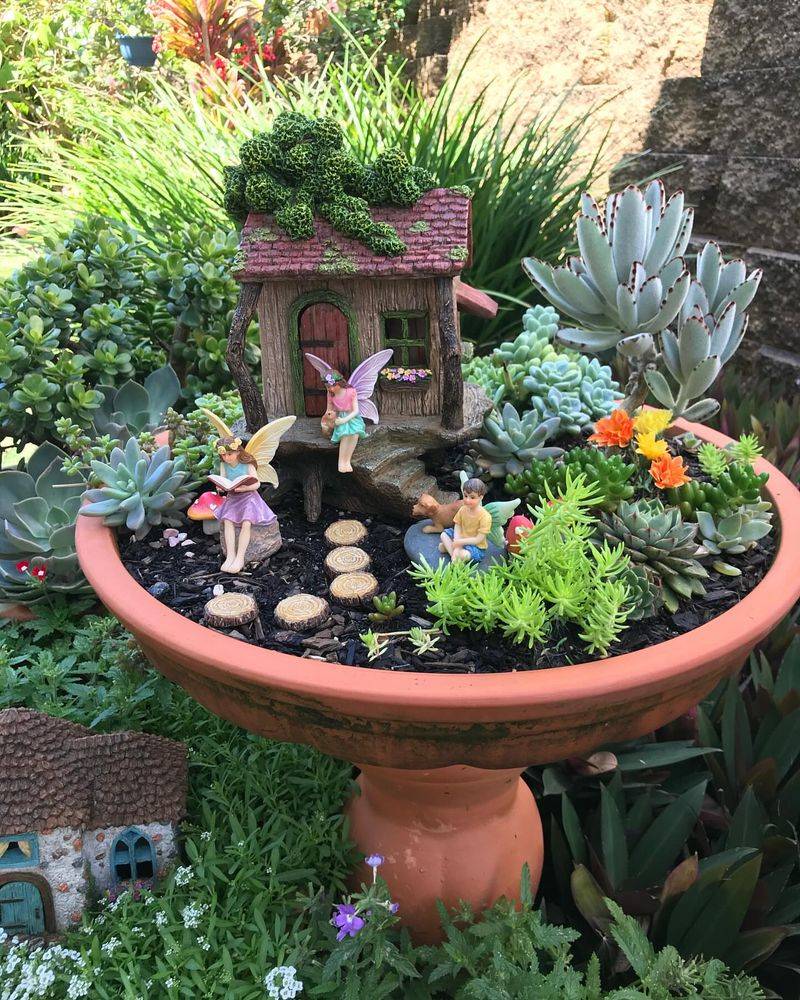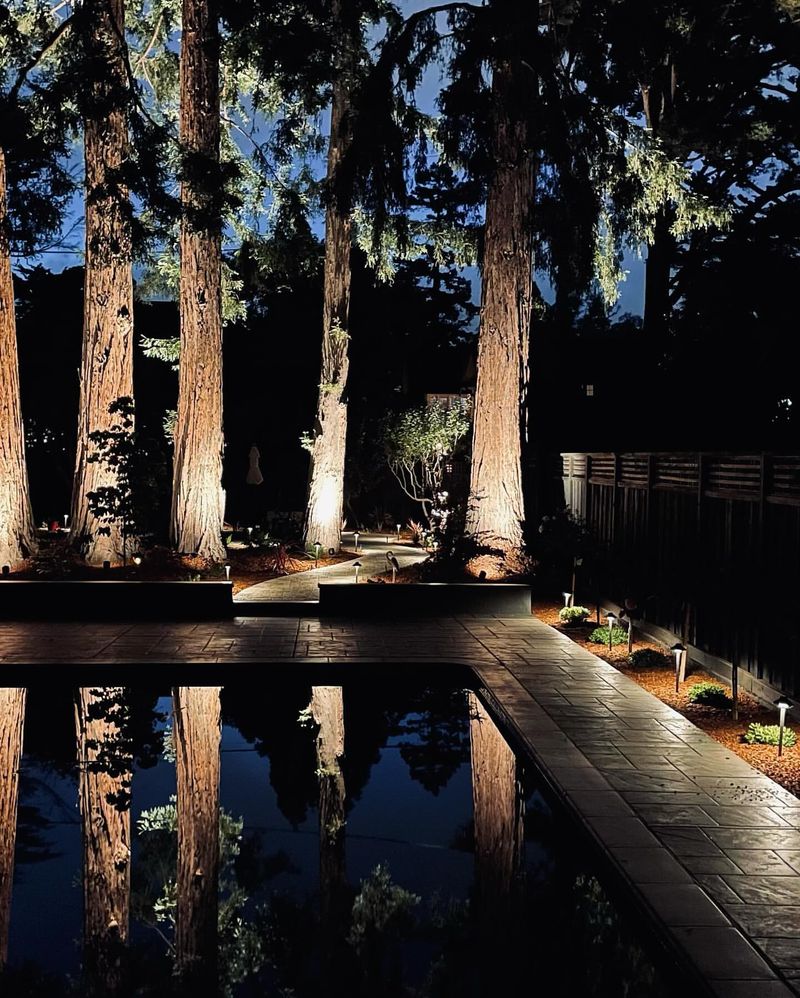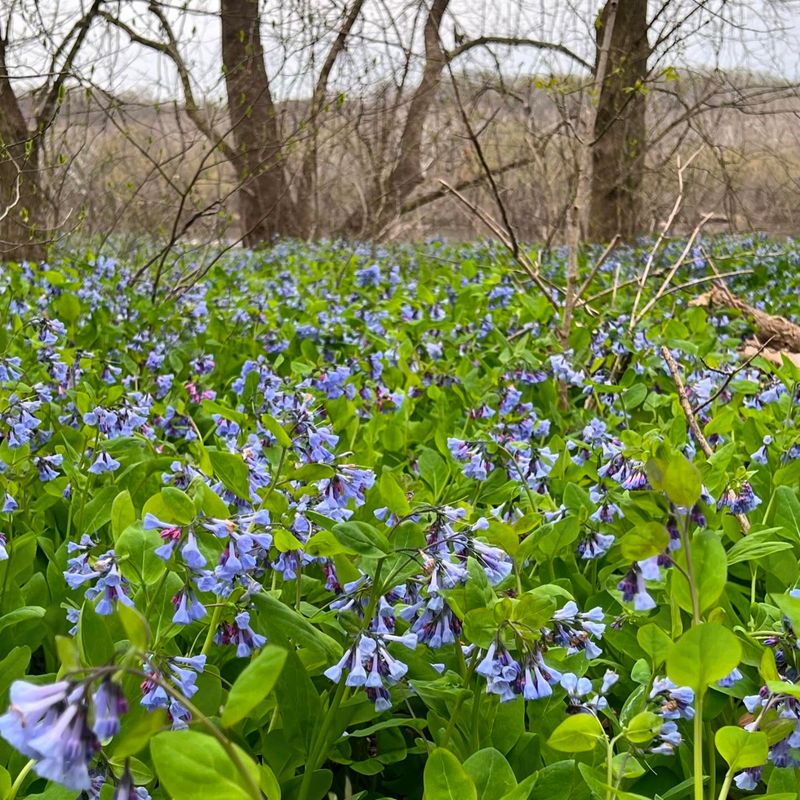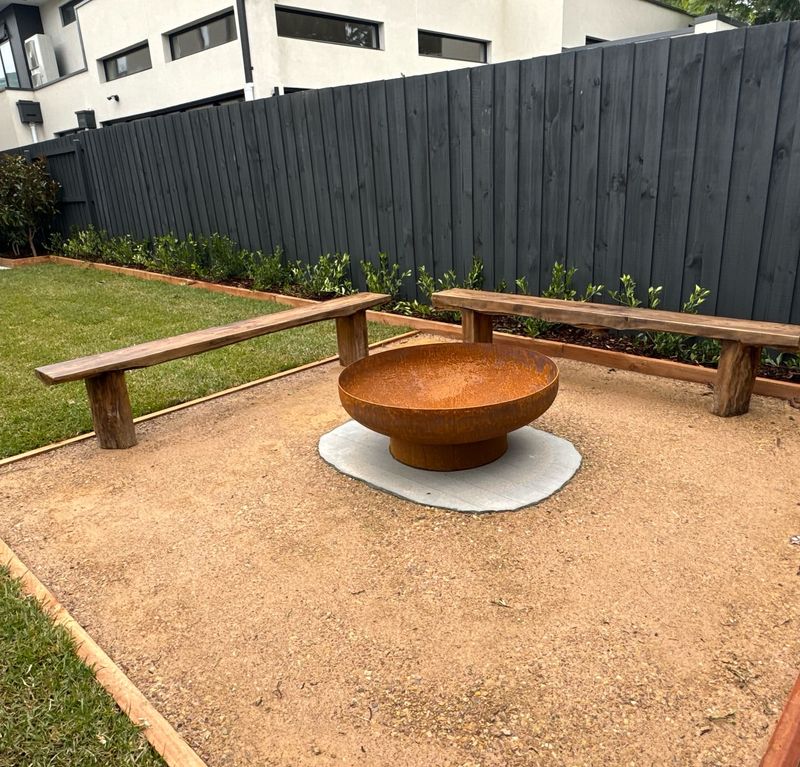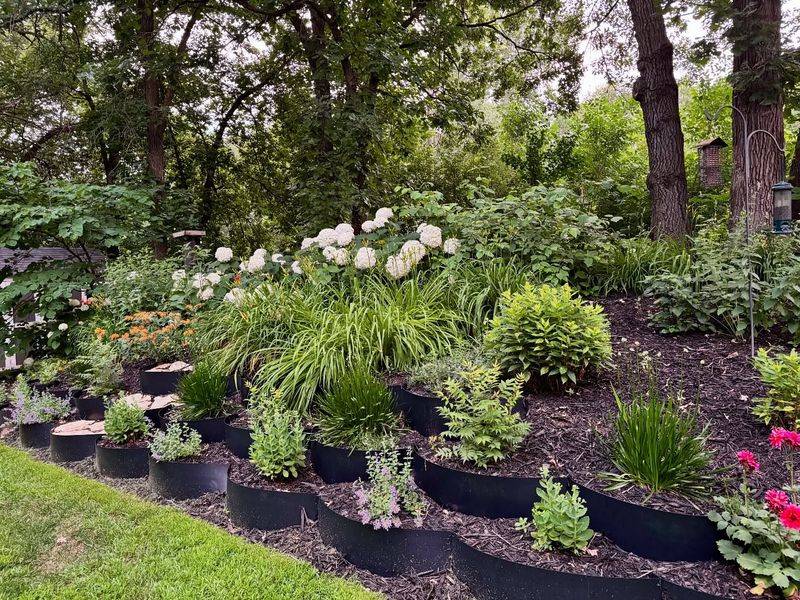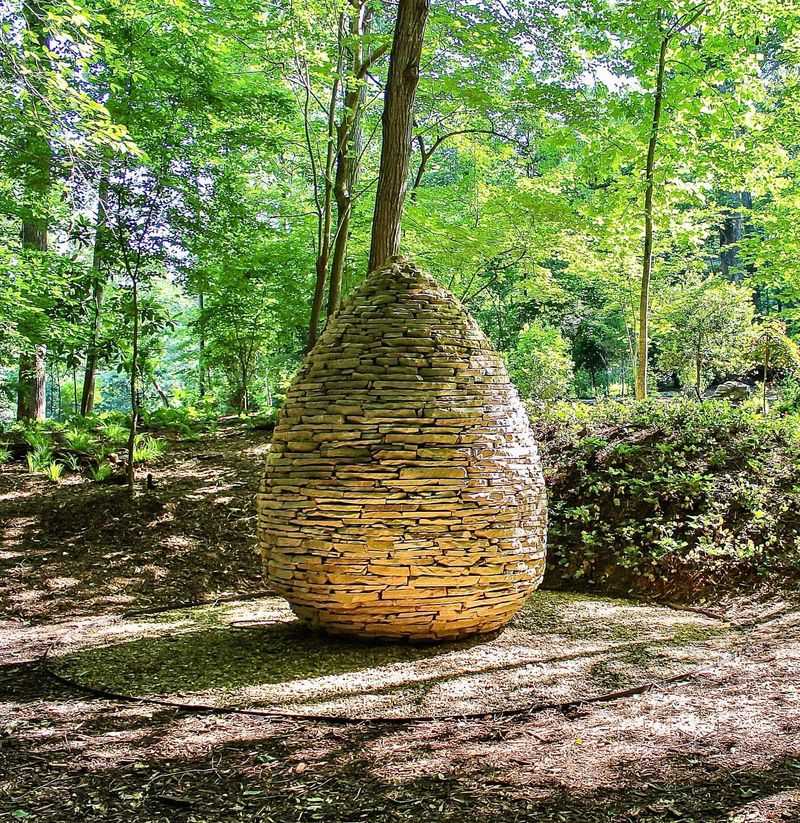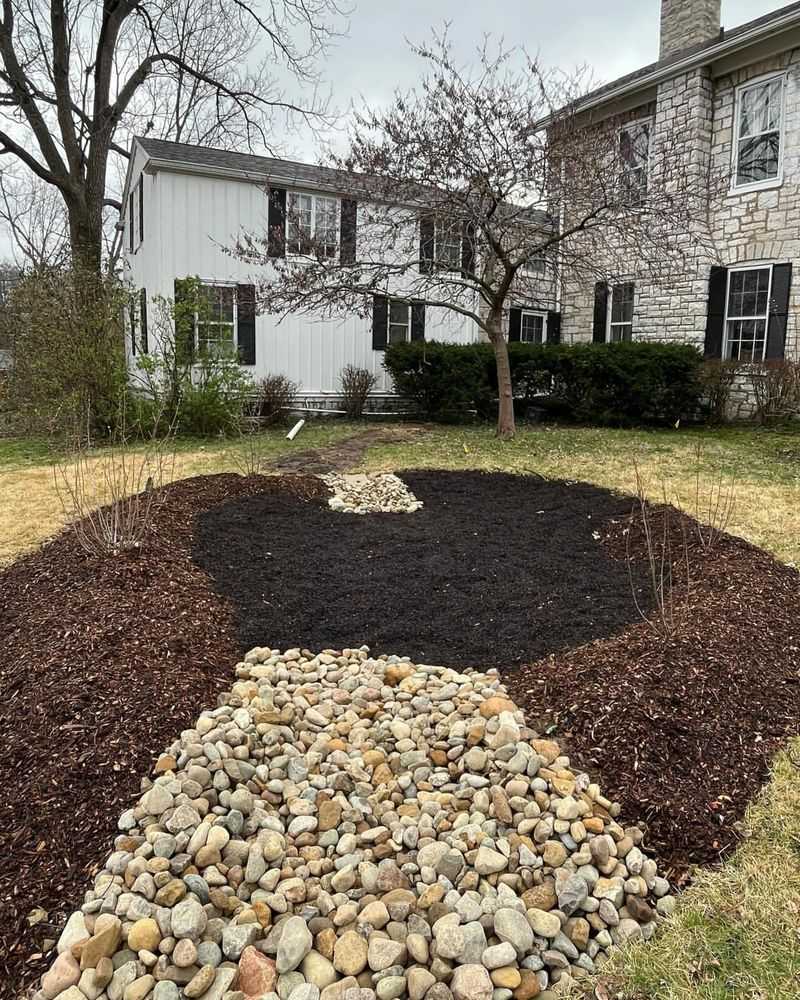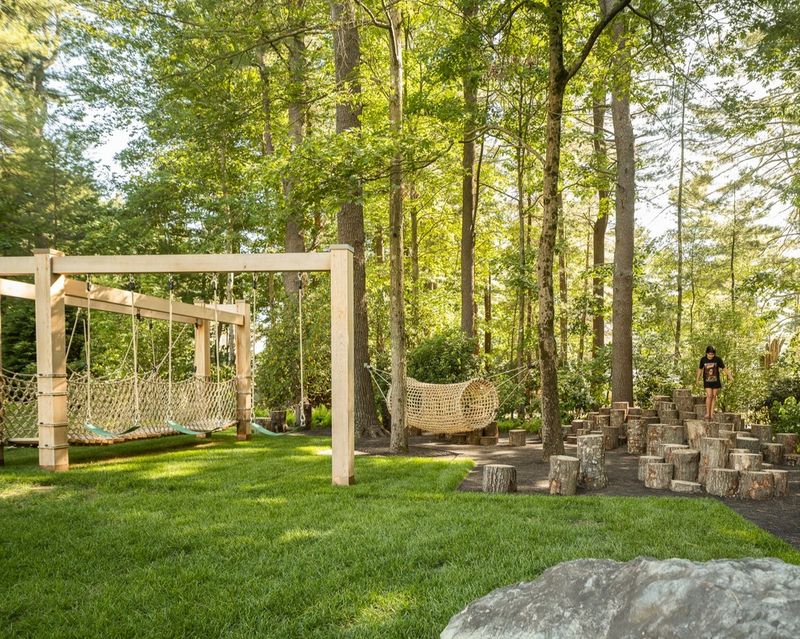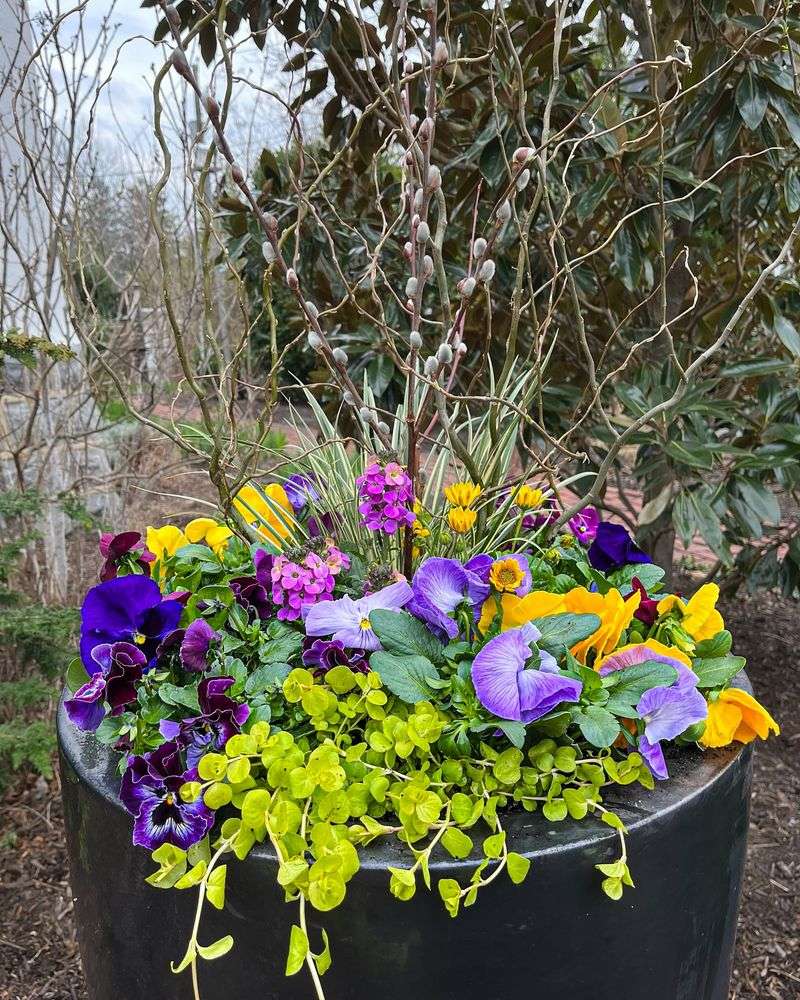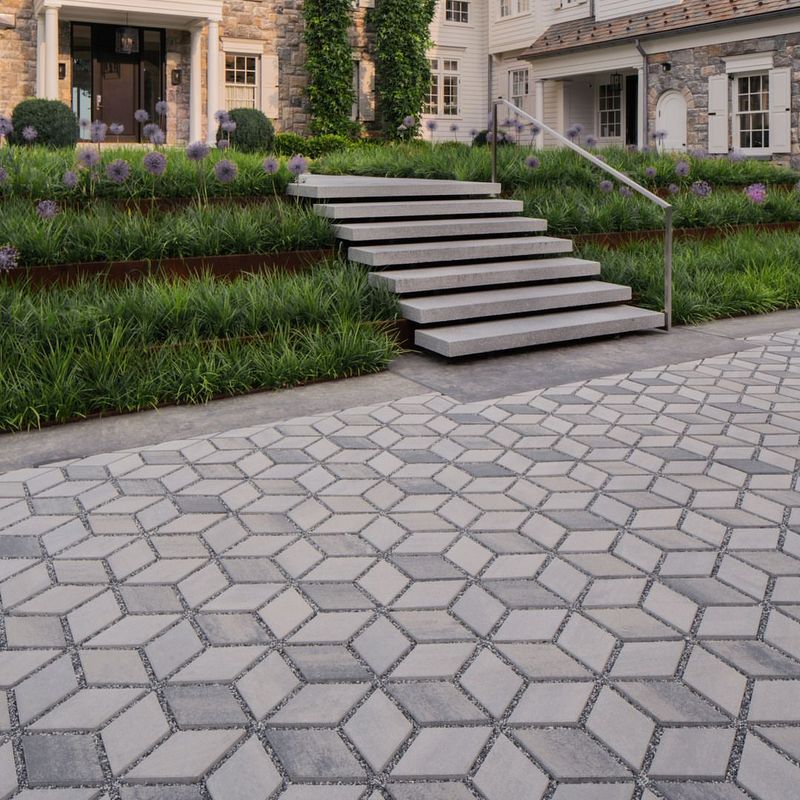Tree roots in Maryland yards aren’t just in the way—they’re part of the story your landscape tells. Instead of fighting them, why not work with what nature’s already given you?
I’ve seen some clever, even beautiful ideas that make those root-heavy spots stand out for all the right reasons. From groundcovers that won’t compete to design tricks that embrace the shade, there’s no shortage of ways to get creative.
These ideas are the kind that make people stop and ask, “Wait—how did you pull that off under a tree?”
1. Mulch Magic
Adding a layer of organic mulch around visible roots creates a natural-looking solution that Maryland gardeners love. The right mulch protects roots from lawnmower damage while adding nutrients to the soil as it breaks down.
In the humid Maryland climate, mulch helps retain moisture during hot summers. Choose pine straw, wood chips, or shredded bark, keeping it 2-3 inches deep but never piling directly against the trunk to prevent rot.
2. Shade-Loving Ground Covers
Planting low-growing ground covers between exposed roots adds color while preventing soil erosion. Varieties like sweet woodruff, pachysandra, and ajuga thrive in Maryland’s climate and create a lush carpet effect.
Many Maryland homeowners in Bethesda and Chevy Chase have discovered these plants require minimal maintenance once established. They’ll spread naturally to fill spaces between roots, creating a unified look that’s far more appealing than bare dirt.
3. Decorative Stone Rivers
Creating miniature dry creek beds with smooth river rocks between prominent roots transforms problem areas into artistic features. The stones mimic natural water flow patterns while providing practical drainage during Maryland’s frequent summer thunderstorms.
Homeowners in Frederick County particularly appreciate this low-maintenance solution. Choose varying sizes of rounded stones in complementary colors, arranging them to follow the natural contours created by the tree’s root system.
4. Woodland Fern Gardens
Native ferns create a lush, forest-floor aesthetic that perfectly complements exposed tree roots. Their delicate fronds soften the woody appearance of roots while thriving in the dappled shade conditions common in Maryland forests.
Gardeners in Montgomery County have embraced Christmas ferns, lady ferns, and cinnamon ferns for these applications. Their varying heights and textures create visual interest, and most require minimal care once established in Maryland’s naturally acidic woodland soils.
5. Living Root Bridges
For dramatic landscape statements, Maryland designers sometimes create pathways that incorporate exposed roots as natural steps or borders. This technique transforms obstacles into functional art that guides visitors through your garden.
Several Potomac estates showcase this approach with carefully placed flat stones between root sections. The contrast between smooth stones and gnarled roots creates visual drama while protecting the tree’s vital structures from foot traffic damage.
6. Moss Gardens
Moss creates a velvety carpet that softens the appearance of exposed roots while thriving in Maryland’s humidity. Unlike grass, moss doesn’t compete with trees for nutrients and requires no mowing, making it perfect for root-heavy areas.
Gardeners in Silver Spring have found success with sheet moss and cushion moss varieties. Simply transplant patches between roots, keep moist during establishment, and enjoy the emerald tapestry that develops with minimal maintenance in Maryland’s naturally humid climate.
7. Fairy Garden Hideaways
The natural nooks between tree roots make perfect settings for whimsical fairy gardens that delight both children and adults. Maryland families often create these magical miniature worlds using tiny furniture, figurines, and appropriately scaled plants.
In Howard County neighborhoods, these enchanting displays have become conversation starters. The gnarly character of oak and maple roots provides natural “rooms” and “doorways” that need only minimal embellishment to spark imagination in Maryland’s woodland settings.
8. Sculptural Lighting
Strategic uplighting transforms ordinary tree roots into dramatic sculptural elements after sunset. Maryland landscape designers often use low-voltage LED systems to highlight the interesting textures and shapes of prominent root formations.
In Annapolis waterfront properties, this technique creates magical nighttime ambiance. Choose warm-toned lights for a natural glow, and position fixtures to cast interesting shadows that enhance the three-dimensional quality of Maryland’s mature tree specimens.
9. Native Woodland Wildflowers
Maryland’s native wildflowers like bloodroot, trillium, and Virginia bluebells naturally coexist with tree roots in forest ecosystems. These spring bloomers complete their life cycles before trees fully leaf out, making them perfect companions.
Gardeners in Baltimore County appreciate how these plants bring seasonal color without competing with trees. Plant in small clusters between root sections, and they’ll gradually naturalize into a sustainable woodland garden adapted to Maryland’s specific growing conditions.
10. Rustic Seating Areas
Incorporate large, exposed roots into seating areas by adding custom-built benches that follow their natural contours. Maryland craftspeople often create these one-of-a-kind pieces using locally sourced wood that complements the tree’s character.
In rural Frederick properties, these organic seating arrangements become favorite gathering spots. The combination of living roots and crafted wood creates a seamless transition between nature and human elements in Maryland’s outdoor living spaces.
11. Terraced Root Gardens
For sloped sites with exposed roots, Maryland landscapers often create miniature terraces using natural stone retaining walls. These small, level planting areas between roots prevent erosion while providing space for ornamental plants.
Homeowners in hilly Ellicott City neighborhoods have embraced this practical solution. The combination of stone, soil, and vegetation stabilizes slopes while transforming challenging terrain into attractive, manageable garden spaces adapted to Maryland’s varied topography.
12. Woodland Art Installations
Many Maryland homeowners commission local artists to create custom sculptures that incorporate or complement exposed root systems. Materials like weathered metal, ceramic, or stone blend beautifully with the organic forms of roots.
In artistic communities like Takoma Park, these installations become neighborhood landmarks. Look for pieces that echo the flowing lines of roots or provide interesting contrast through color or texture while respecting Maryland’s natural woodland aesthetic.
13. Rain Garden Integration
Maryland’s increasing stormwater management needs have inspired landscapers to create rain gardens that work with, not against, tree roots. These specialized plantings capture runoff while adding beauty to low-lying areas around trees.
In environmentally conscious Columbia neighborhoods, these functional gardens feature moisture-loving native plants like cardinal flower and blue flag iris. The root systems help filter water while the depression created by the rain garden protects Maryland watersheds from harmful runoff.
14. Natural Playscapes
Exposed roots make excellent natural climbing features for children’s play areas. Maryland families often enhance these areas with smooth stepping stones, balance beams, or rope features that encourage active outdoor play.
In family-friendly Rockville communities, these nature-based playgrounds have become popular alternatives to plastic equipment. The irregular shapes of roots provide developmental benefits through varied climbing challenges while connecting Maryland children to their natural environment.
15. Seasonal Container Gardens
Placing decorative containers among prominent roots allows for seasonal color without disturbing the tree. Maryland gardeners often use frost-resistant pottery or weathered wooden vessels that complement the natural setting.
Gardeners in Gaithersburg rotate plantings with Maryland’s changing seasons. Spring bulbs give way to summer annuals, followed by autumn chrysanthemums and winter evergreens, creating year-round interest without competing with the tree’s vital root system.
16. Permeable Hardscaping
When paths must cross root zones, Maryland landscapers recommend permeable materials that allow water and air to reach roots. Options like decomposed granite, gravel set in resin, or specialized rubber pavers protect both trees and pedestrians.
Homeowners in historic Easton appreciate these solutions for their blend of functionality and aesthetics. The flexible nature of these materials allows them to adapt to Maryland’s freeze-thaw cycles without damaging roots or creating tripping hazards as roots continue to grow.

